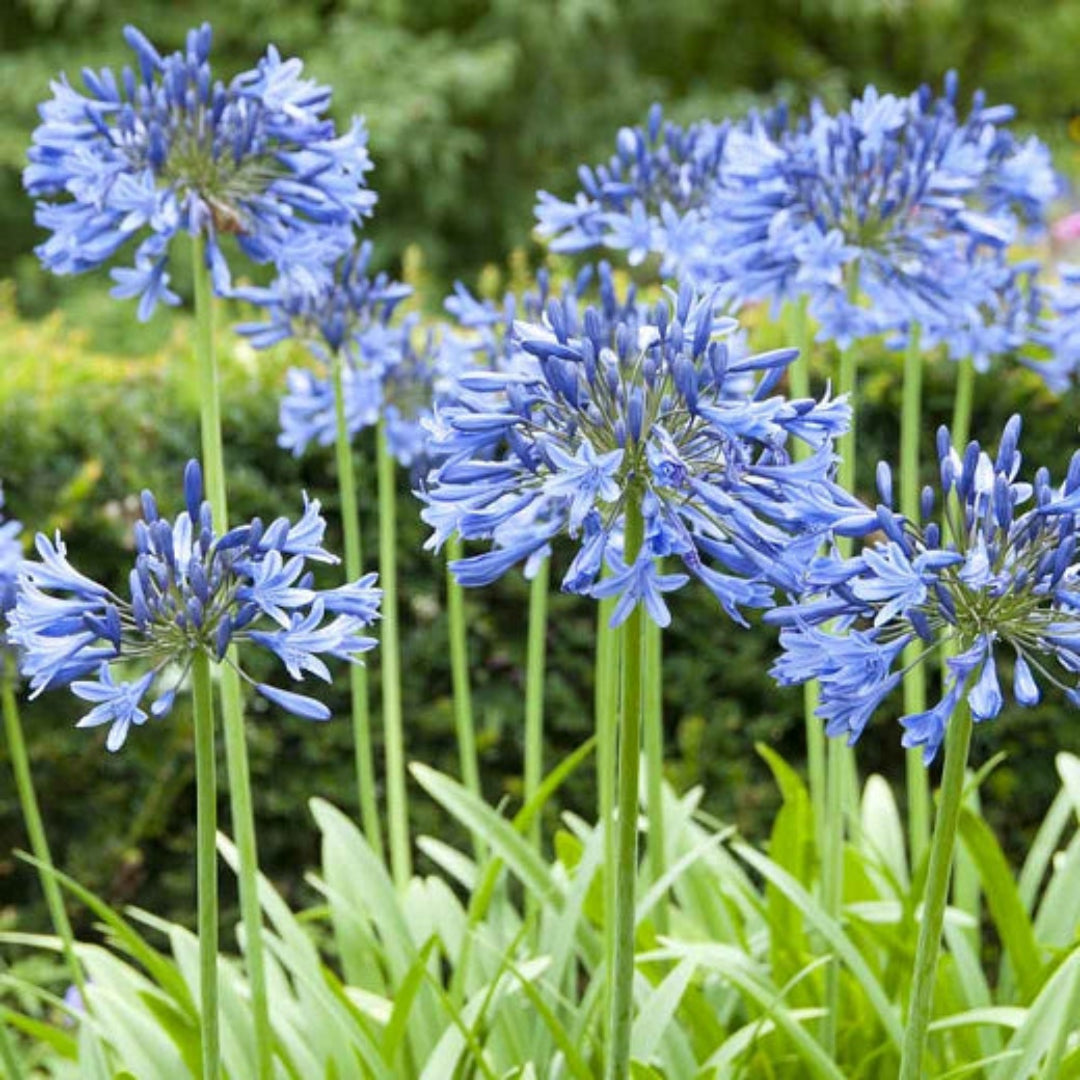Agapanthus Expanding Conditions: Dirt, Sunlight, and Watering
Agapanthus Expanding Conditions: Dirt, Sunlight, and Watering
Blog Article
Grasping the Art of Agapanthus Treatment: Important Actions for Healthy Growth and Vivid Blooms
In the world of horticulture, the growing of agapanthus stands as a rewarding undertaking for those who seek to nurture these classy blooming plants. With their striking blooms and stylish vegetation, agapanthus has caught the interest of gardeners worldwide. However, attaining optimum development and dynamic blooms needs a nuanced strategy that incorporates various important actions. From picking the best variety to mastering pruning techniques, the trip in the direction of growing prospering agapanthus plants is multifaceted and holds the key to opening the full capacity of these agricultural treasures.

Choosing the Right Agapanthus Selection

When selecting the best Agapanthus selection for your garden, consider elements such as environment viability, flower shade, and development behavior. Furthermore, consider the climate in your area to make certain the Agapanthus selection you choose can prosper in your certain problems. Recognizing the growth behavior of different Agapanthus varieties is important for proper positioning within your yard.
Ideal Planting Conditions
Thinking about the optimal ecological requirements is essential for successful Agapanthus growing. Agapanthus plants are delicate to cold temperatures and should be safeguarded from frost throughout winter season months.
To make certain healthy growth and lively flowers, plant Agapanthus bulbs at a deepness of regarding 2-4 inches and space them 8-12 inches apart. Adding raw material, such as garden compost, to the dirt can boost water drainage and fertility, promoting durable origin development. Mulching around the base of the plants aids retain wetness and subdues weed growth. Routine watering is important, specifically during the expanding period, to maintain the dirt continually damp however not saturated.
Watering and Feeding Tips
Preserving appropriate moisture degrees and providing crucial nutrients are vital components in the treatment regimen for Agapanthus plants. When it comes to watering Agapanthus, it is essential to strike a balance. These plants like consistently wet dirt however are susceptible to root rot if overwatered.
Feeding Agapanthus is necessary for promoting healthy growth and prolific blossoms. Apply a well balanced fertilizer, such as a 10-10-10 formula, in the early spring as new development emerges. Repeat this application every 6-8 weeks throughout the growing season. Prevent too much fertilization, as it can cause rich foliage at More Help the expense of blossoms. Constantly comply with the manufacturer's directions for proper dilution and application methods. By adhering to these watering and fertilizing ideas, you can guarantee your Agapanthus plants prosper and produce vibrant, resilient flowers.
Pruning Strategies for Agapanthus
Pruning Agapanthus plants at the suitable times and with correct methods is critical for keeping their health and promoting optimum growth and flowering. The ideal time to prune Agapanthus is in late winter season or very early springtime before brand-new growth arises.
Deadheading spent blossoms can also redirect the plant's power right into producing even more blossoms instead than establishing seeds. If you desire to gather seeds for breeding, leave some flowers to mature and dry on the plant.
Remember to make use of clean, sharp devices to make exact cuts and minimize the risk of presenting diseases. Agapanthus. Routine pruning will help maintain your Agapanthus looking cool and healthy and balanced while ensuring a plentiful screen of stunning flowers
Managing Typical Pests and Illness
After making certain proper pruning strategies for Agapanthus, it is essential to attend to typical insects and illness that can impact the health and wellness and vigor of these plants. One typical parasite that influences Agapanthus is the Agapanthus gall midget.
One more common issue is fungal fallen leave area, which presents as dark sores on the leaves. To stop fungal diseases, make sure great air blood circulation around the plants, prevent overhead watering, and eliminate any type of contaminated fallen leaves promptly. In addition, Agapanthus plants can experience origin rot if they are planted in poorly draining dirt. To stop this, plant Agapanthus in well-draining dirt and stay clear of overwatering. By being alert and taking punctual activity against diseases and parasites, you can assist your Agapanthus plants grow and create vibrant blooms.

Conclusion
Finally, grasping the art of agapanthus treatment involves selecting the ideal variety, giving suitable planting problems, appropriate watering and fertilizing, proper trimming methods, and learn this here now dealing with usual insects and illness. By adhering to these essential steps, you can make certain healthy development and vibrant flowers for your agapanthus plants. Bear in mind site link to frequently keep track of and maintain your plants to promote their general well-being and long life.
To guarantee healthy growth and vibrant flowers, plant Agapanthus bulbs at a depth of about 2-4 inches and area them 8-12 inches apart. By complying with these watering and fertilizing tips, you can guarantee your Agapanthus plants thrive and create dynamic, long-lasting blooms.
One typical bug that affects Agapanthus is the Agapanthus gall midge. Furthermore, Agapanthus plants can suffer from root rot if they are grown in badly draining pipes soil. By adhering to these important actions, you can ensure healthy and balanced growth and lively blooms for your agapanthus plants.
Report this page